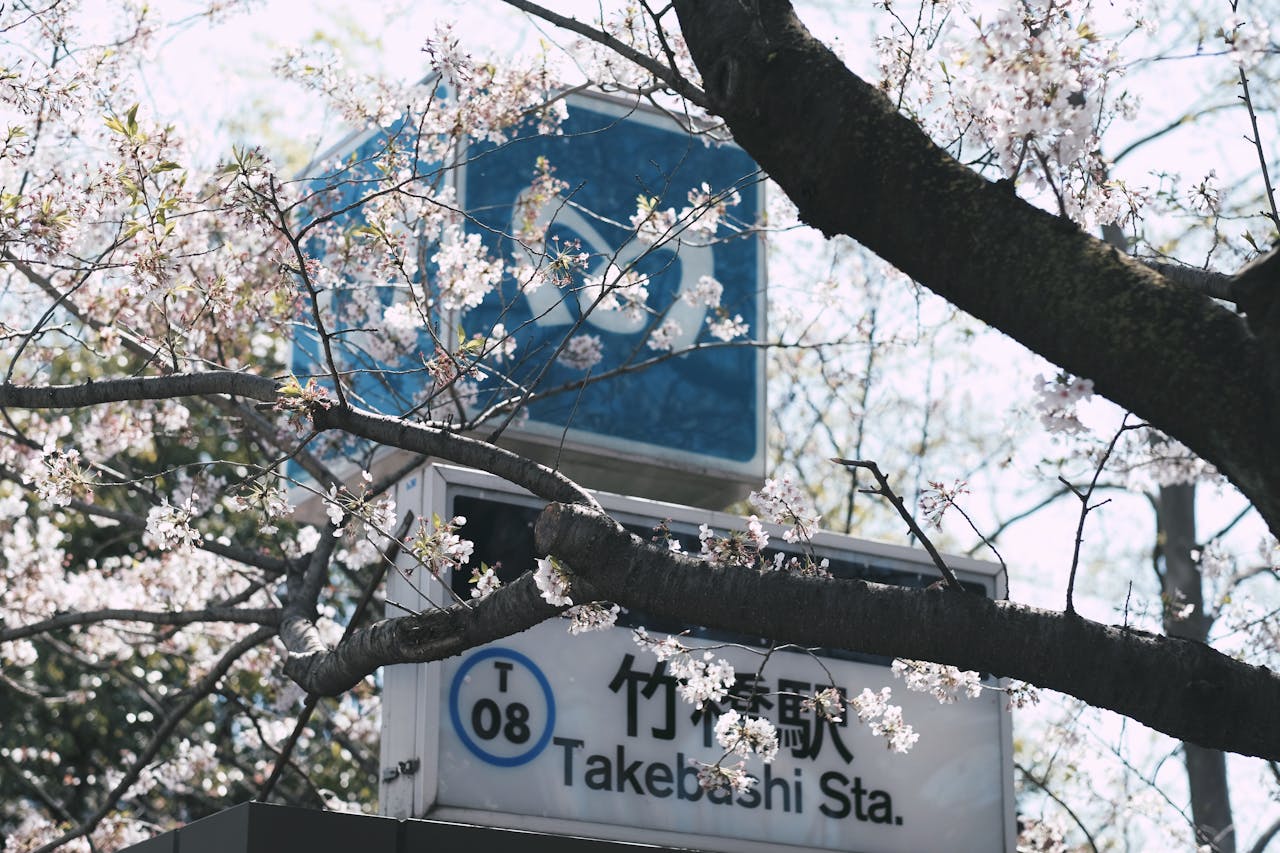Mastering the Japanese Particle の no
The Japanese particle の no is one of the most commonly used and important particles in the language. If often links two nouns in a possessive relationship, so it functions similarly to the English word of or the possessive ’s. But that is not its only use.
In this post we’ll break down the uses of the Japanese particle の no with clear explanations and examples. First, we’ll look at its role in marking possession or ownership. Then we’ll look at how it links two nouns in an attributive relationship, similar to compound nouns in English. Next, we’ll see how の no can link a clarifying noun phrase to another noun phrase. Then we’ll look at の no as a nominalizer, meaning something that can turn a verb or adjective into a noun for various grammatical purposes. And finally, we’ll see how の no can be used almost like a pronoun to replace a noun.
The Japanese Particle の no as Possession: A’s B / the B of A
The most basic and common use of の no is to show possession or ownership.
Structure: A の B: “B belonging to A” or “A’s B”
- わたしの ほん
watashi no hon
my book - たけしさんの くるま
Takeshi-san no kuruma
Takeshi’s car
In these examples, the particle の no is linking two nouns in a relationship of possession or ownership. Let’s see some more examples in sentences.
- それは誰の車ですか?
Sore wa dare no kurumadesu ka?
Whose car is that? - これは わたしのです。
Kore wa watashi no desu.
This is mine. - 奥さんのお仕事は何ですか。
Okusan no oshigoto wa nan desu ka.
What is your wife’s occupation? What does your wife do for a living? - 彼の名前は何ですか。
Kare no namae wa nan desu ka.
What is your boyfriend’s name? - 私の町には大きなスーパーがあります。
Watashi no machi niwa ōkina sūpā ga arimasu.
There is a big supermarket in my town.
The Japanese Particle の no as Attribution: Describing Relationships Between Nouns
The particle の no is also used to link two nouns that are associated in a relationship other than strict possession or ownership. In these cases, the English is typically a compound noun, or two nouns linked by of or for or something similar.
Structure: A の B: “B of/for A” or “A-B”
Examples:
- にほんごの せんせい
nihongo no sensei
Japanese (language) teacher (“a teacher of Japanese”) - 革のジャケット
kawa no jaketto
a leather jacket (“a jacket of leather”) - がくせいの ノート
gakusei no nōto
a student’s notebook (“a notebook for a student”) - にほんの えいが
nihon no eiga
a Japanese movie (“a movie from Japan”) - こども の ほん
kodomo no hon
a children’s book (“a book for children”)
These examples are all broader than possession. They include relationships like origin, purpose, or association. Let’s see some example sentences.
- 地下鉄の駅はどこですか?
Chikatetsu no eki wa dokodesu ka?
Where is the subway station? - 映画のチケットは高いですね!
Eiga no chiketto wa takai desu ne!
Movie tickets are expensive! - 新作映画の予告編を見ましたか。
Shinsaku eiga no yokokuhen o mimashita ka.
Have you seen the trailer for the new movie yet?
Several common Japanese location expressions use the particle の no. These uses are not literal possession, but rather association, so we’ll include a few examples here.
- 食べ物は冷蔵庫の中にあります。
Tabemono wa rēzōko no naka ni arimasu.
The food is in the refrigerator. - おばとおじは家の近くに住んでいます。
Oba to oji wa uchi no chikaku ni sunde imasu.
My aunt and uncle live near our house. - 机の上にランプがあります。
Tsukue no ue ni ranpu ga arimasu.
There is a lamp on the desk. - ホテルの隣です。
Hoteru no tonari desu.
It’s next to the hotel.
The Japanese Particle の no as Apposition: Explaining What Something Is
The grammatical term apposition means when you use two nouns that refer to the same thing in order to clarify an identity. Some English examples are: Washington DC, the capital of the US or Jim’s brother Bill. You can use の no to express apposition in order to further clarify or identify something.
Structure: A の B: “A, [which/who is] B”
Examples:
- たなかさんの おとうと の けん
Tanaka-san no otōto no Ken
Tanaka san’s younger brother KenorKen, Tanaka-san’s younger brother - せんせいの たなかさん
sensei no Tanaka-san
the teacher Tanaka or Tanaka, who is a teacher
In this case, の no is helping identify or define someone/something. Here are a few example sentences.
- 色のオレンジか、果物のオレンジか?
Iro no orenji ka, kudamono no orenji ka?
The color orange, or the fruit orange? - 京都の街は美しいです。
Kyōto no machi wa utsukushīdesu.
Kyoto, the city, is beautiful. - 私の友達のビルは日本語を話します。
Watashi no tomodachi no biru wa nihongo o hanashimasu.
My friend Bill speaks Japanese.
The Japanese Particle の no as Nominalization: Turning Verbs/Adjectives into Nouns
The particle の no is also used to nominalize a verb or adjective, meaning it can turn a verb (or adjective, which in Japanese is a verb) into a noun. In English, a common way of doing this is to use the gerund, which is the -ing form. For example, to study is a verb, but the gerund studying is a noun. In Japanese, you can nominalize a verb (or adjective) by adding の no to the plain form, which typically ends in -る -ru or some other ending in –u (う u, ぶ bu, く ku, etc.)
Structure: [plain form verb] の : “X-ing”
Examples:
| plain form | English | nominalized form | English |
| 食べる taberu | (to) eat | 食べるの taberu no | eating |
| 見る miru | (to) look | 見るの miru no | looking |
| する suru | (to) do | するの suru no | doing |
| 飲む nomu | (to) drink | 飲むの nomu no | drinking |
| 行く iku | (to) go | 行くの iku no | going |
Let’s see some example sentences.
- たべるの が すきです。
Taberu no ga suki desu.
I like eating. - うたうの は たのしい。
Utau no wa tanoshii.
Singing is fun. - 言語を学ぶのは楽しいです。
Gengo o manabu no wa tanoshīdesu.
Learning languages is fun. - {読書をする・旅行をする・テレビを見る}のが好きです。
{Dokusho o suru/Ryokō o suru/Terebi o miru} no ga suki desu.
I like to read/travel/watch TV. - 何をするのが好きですか。
Nani o suru no ga suki desu ka.
What do you like to do?
The Japanese Particle の no as Replacement: “The X One / Ones”
The particle の no can replace a noun when it’s clear from context, especially when it’s described by an adjective. This is like the English construction the X one.
Structure: [adjective X]の : “the X one”
Examples:
- しろいの
shiroi no
the white one - 小さいの
chīsai no
the small one
Here are some example sentences.
- あおいシャツと しろいの、どっちがすき?
Aoi shatsu to shiroi no, docchi ga suki?
Which do you like: the blue shirt or the white one? - 大きいのが好きですか、それとも小さいのが好きですか?
Ōkī no ga sukidesu ka, soretomo chīsai no ga sukidesu ka?
Do you like the big one or the small one? - 甘いのが食べたい。
Amai no ga tabetai.
I want to eat the sweet one.
Get on the road to speaking Japanese with the Language Garage!
We hope you’ve enjoyed learning about the Japanese particle の no. If you’d like to learn more:
- Follow us on Facebook, LinkedIn, BlueSky, Twitter, Threads, Instagram, or Pinterest. We publish lots of Japanese vocabulary, grammar, and culture notes, so it’s a great way to pick up some new vocabulary and practice.
- Check out our other posts on Japanese language, culture, and more.
- Enroll in affordable, flexible, and personalized private online Japanese lessons or sign up for a small group online Japanese class.
- Create a free Language Garage account to access tons of Japanese vocabulary, grammar, and culture.
Photo by Evgeny Tchebotarev






